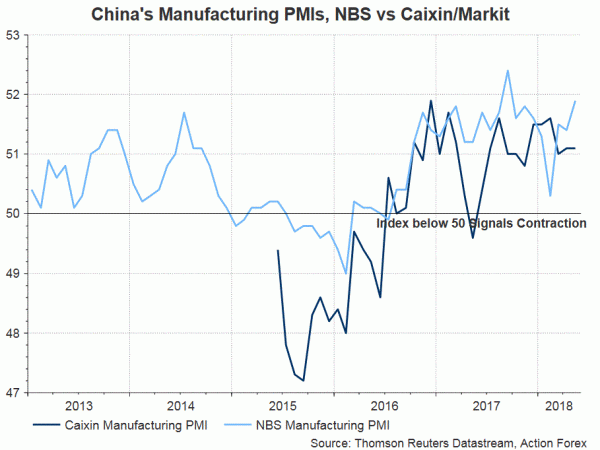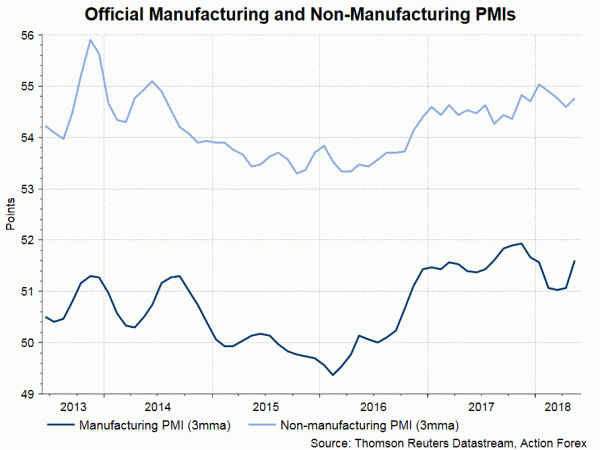China’s official PMI report (focusing on big companies) signals improvement in both manufacturing and services sector. The Caixin/ Markit data (focusing on SMEs) suggest both sectors remained resilient in May. We believe the government’s policy shift, to prioritize over domestic growth from deleveraging, has proved effective so far. The official report indicates limited impact of the recent US-China trade tension, while the Caixin/ Markit report suggests that new export orders stayed in contraction territory. The trade balance data due Friday would give more hints on the country’s exports sector.

The official data, by the National Bureau of Statistics, shows that the manufacturing PMI increased to 51.9 in May, beating consensus of 51.4 and April’s 51.9. This marks the second highest reading since 2012 and the highest for the month of May since 2011. The improvement was broadly based, led by production and new orders. The sub-index for the form rose +1 point to 54.1 while that for the latter gained +0.9 point to 53.8 for the month. Trade-related sub-indices stayed under the spotlight as US-China trade friction remain elevated. Yet, the report indicates limited impact on China’s exports so far. In May, new export orders sub-index added +0.2 point to 51.2 while the import sub- index rose +0.7 point to 50.9. Meanwhile, input prices show signs of picking up, of which the sub-index rebounded, for the first time this year, to 56.7 from 53 in April. The significance of the jump might also reflect in the pickup in PPI inflation.
The manufacturing PMI by Caixin/ Markit steadied at 51.1 in May, slightly missing consensus of 51.2. Concerning the sub-indices, output and new order increased while employment dropped. The sub-index for new export orders improved in May but remained in contraction territory, suggesting that the impacts of trade tensions have been more serious on SMEs, than on large corporations. As the agency concludes, “operating conditions across the manufacturing sector remained stable. The growth in the price of industrial products has gained momentum, however, the export situation was still disappointing”.
Services Sector
The official data shows that the non-manufacturing PMI edged +0.1 point higher to 54.9 in May. This came in higher than consensus of 54.8. According to NBS, consumption growth was the main factor supporting service sector activity, which was the key contributor the pickup in non-manufacturing PMI last month. Separately, the Caixin/ Markit services index steadied at 52.9 in May. Looking into the details, the employment sub-index continued to rise, while the new business sub- index slipped slightly. According to the agency, these suggest “a positive change on the supply side and marginally weaker demand across the service sector”. The changes led to “a softer rise in prices charged, easing the upward pressure on service prices”. Yet, input costs show an accelerated pace of increase after slowing for three consecutive months.














